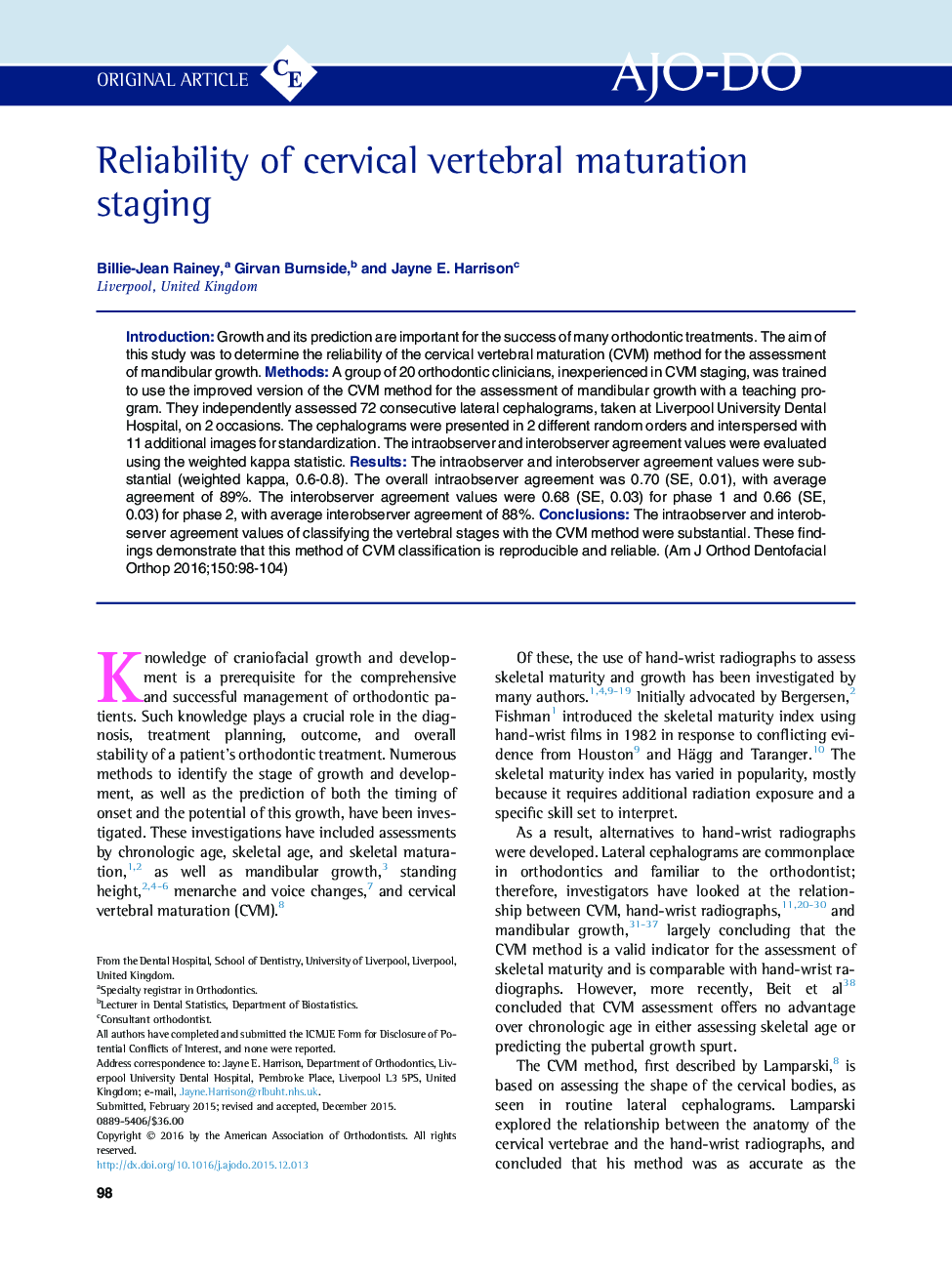| Article ID | Journal | Published Year | Pages | File Type |
|---|---|---|---|---|
| 3115377 | American Journal of Orthodontics and Dentofacial Orthopedics | 2016 | 7 Pages |
•Reliability of the cervical vertebral maturation (CVM) method was determined.•Twenty inexperienced observers staged 72 full lateral cephalograms.•Overall intraobserver agreement was substantial (weighted kappa, 0.70; SE, 0.01).•CVM staging classification is reproducible and reliable.
IntroductionGrowth and its prediction are important for the success of many orthodontic treatments. The aim of this study was to determine the reliability of the cervical vertebral maturation (CVM) method for the assessment of mandibular growth.MethodsA group of 20 orthodontic clinicians, inexperienced in CVM staging, was trained to use the improved version of the CVM method for the assessment of mandibular growth with a teaching program. They independently assessed 72 consecutive lateral cephalograms, taken at Liverpool University Dental Hospital, on 2 occasions. The cephalograms were presented in 2 different random orders and interspersed with 11 additional images for standardization. The intraobserver and interobserver agreement values were evaluated using the weighted kappa statistic.ResultsThe intraobserver and interobserver agreement values were substantial (weighted kappa, 0.6-0.8). The overall intraobserver agreement was 0.70 (SE, 0.01), with average agreement of 89%. The interobserver agreement values were 0.68 (SE, 0.03) for phase 1 and 0.66 (SE, 0.03) for phase 2, with average interobserver agreement of 88%.ConclusionsThe intraobserver and interobserver agreement values of classifying the vertebral stages with the CVM method were substantial. These findings demonstrate that this method of CVM classification is reproducible and reliable.
Graphical abstractFigure optionsDownload full-size imageDownload high-quality image (168 K)Download as PowerPoint slide
